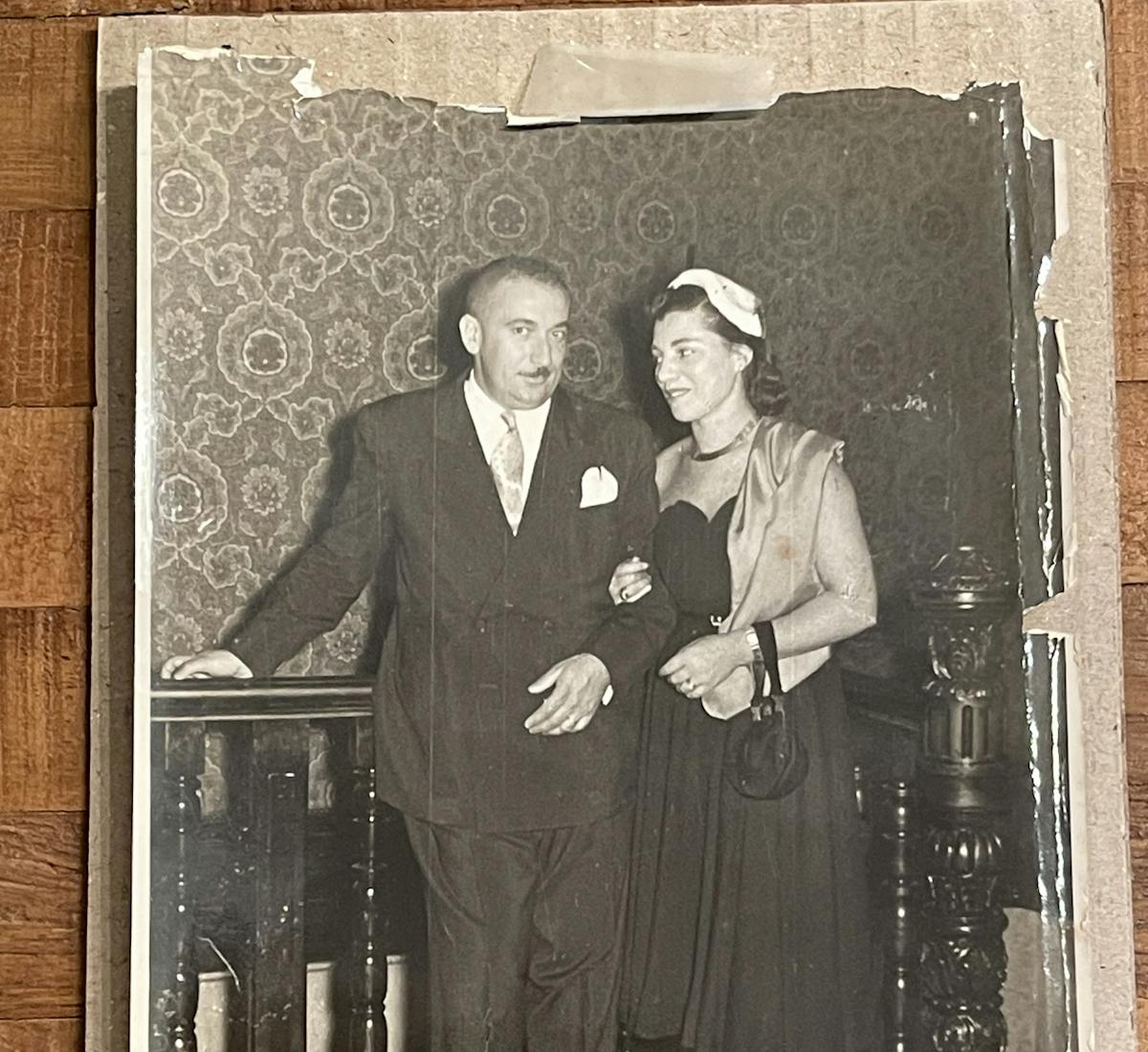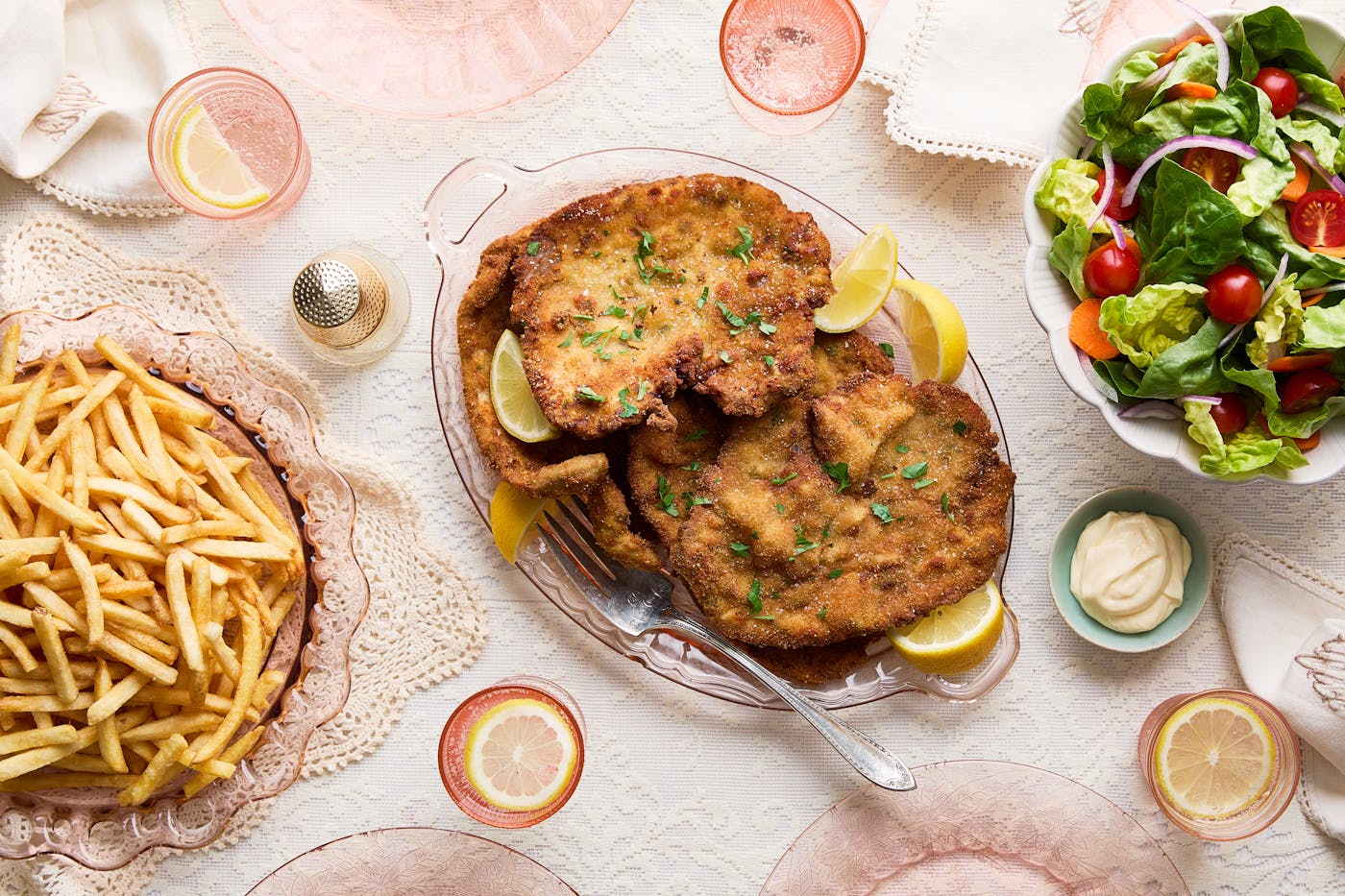Shared by Romina Naparstek


Romina Naparstek can still picture her grandparents’ home in Buenos Aires if she closes her eyes. “I can smell the cigar from my grandpa and open the refrigerator and see all of [my grandmother’s] little sour cream jars that she used as containers,” she shares. Their home was a gathering place for the family. Romina would go over after school often and her grandmother Elena — who she called Bobe — would serve alfajores, the quintessential Argentine dulce de leche sandwich cookies, and local croissants called media lunas from a local bakery along with freshly squeezed orange juice she made.
Born in Zamość, a town in Eastern Poland, Elena came to Argentina as a child in 1933. “She was an assertive, but quiet woman,” Romina explains. Elegant in a traditional way, her Bobe always styled her hair in the same fashion. When Romina thinks of dinners at her grandparents’ home, she says “I don’t see these big tables of sophisticated food. It was about simple things for them — and sharing the moment.”
At times, Elena blended culinary traditions. For Passover, she served small matzah balls in tomato sauce and on Rosh Hashanah, she made potato knishes alongside veal Milanesas, a dish that’s similar to schnitzel. “In Argentina, it’s one of the most traditional foods — they sell it at corner stores, and every little restaurant sells a Milanesa.”
When Romina was 16, her parents asked her if she would be alright moving to Miami. “I don’t think we really understood what it meant,” she says. But five months later, she relocated with her parents and brothers so they could seek out new opportunities. “It wasn’t easy and I think we all had our crisis,” Romina adds, but more than 20 years later, she remains grateful that they made the decision.
In Miami, the family no longer lived just a short drive away from her Bobe. “So it was important for [my mom] to maintain that closeness and that was done through food,” she says. “For us, each plate was a reminiscence of who we were back in Argentina, and the connection with each of those family members who came before, in Poland.”
At first, her family couldn’t find the right cut of meat for the Milanesas, but when her father finally found a supplier, her mother Patricia visited him every two months to buy a box of veal cutlets. And the family gathered to make Milenesas en masse for two or three hours at a time. They created an assembly line with one person cutting, another pounding, a third breading and so on, until 150 or so Milanesas were ready to be transferred to the freezer and fried later.
Their home was always full. “It’s a house where the doors are always open for everyone and there's always food for everyone,” Romina says. But not Milanesas. The cutlets became a sacred thing, reserved just for the family.
Romina is happy to share anything else with guests or friends, including alfajores, which her family started to bake in Miami as a way to remain connected to Argentina. The cookies, which inspired “The Traveling Alfajor,” a children’s book she wrote, have “become part of who I am,” she explains.
The Milanesas also hold a prized place in the lives of her two children, including her daughter who is named Elena in honor of Romina’s Bobe. Romina adds: “We eat Milanesas once a week — they understand the importance of it.”
